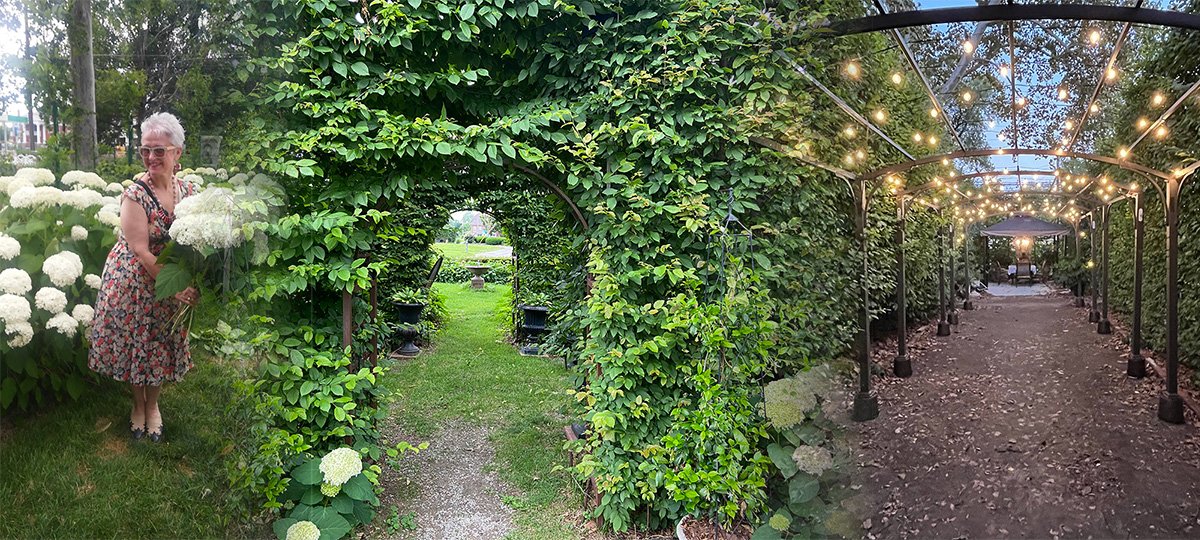The Power of Permaculture
This is a collage of my friend Xenia on the left with newly transplanted hydrangeas and hornbeams and those same plants 7 years later.
This is the story of systems design and permaculture in the service of sustainability on an urban farm. This collage of images showcases 7 years of successful permaculture that transformed 30 cut stems of hydrangea, and 36 cut branches into the hornbeam allee that exists at Mezzacello Urban Farm today. This is the power of permaculture.
We Have a Plan and a Permaculture Purpose
When we were planning Mezzacello Urban Farm there were three main motivations behind our intent.
Create a formal and food garden capable of adapting and supporting all life as a xeroscape plan
Create a plan that was accessible and logical, with clear routes and defined garden structures
Create a cohesive and sustainable plan to optimize resources and still be biodiverse and vibrant
The solution that unites all three of these objectives is permaculture systems, like Hugelkultur and Lasagna Beds. While still in the planning stage we designed the gardens to the east and the gardens to the west to feature a permaculture bed structure that would mimic a forest floor with built in swales and composting biomass. Every bed was engineered this way.
The swales and hugelkulture structures guarantee that plants are healthy and watered. They will fail in times of drought as our biodiversity is not as robust as a forest floor. But it is strong enough to grow a copse of hornbeams in 7 years.
The hornbeams alone lock in roughly 22.6Kg (50lbs) of carbon (that’s a whopping 1,633Kgs [3,600lbs] of carbon sequestration when you include roots and root biomass + 36 trees in the hornbeam allee). All those trees locks in roughly 22Kgs (48lbs) of CO2 a tree can convert in a year for a grand total of 784Kgs (1,728lbs) of CO2 processed in one year without needing a single drop of city water.
That is the power of permaculture. Last summer my Ohio EPA Environmental and Climate Justice Academy factored out that Mezzacello can convert roughly 122,245 Kgs of CO2 that the farm is capable of converting*. That is a staggering amount.
Potager gardens and raised beds do use mostly rainwater cachement, but some city water is needed to grow water-hungry food.
Peace and Pride
There is no greater sense of peace and pride than living in a garden that matches your ambition and your ability. The pride of knowing the system you built is lush, functional, sustainable and manageable is fulfilling. The formal gardens at Mezzacello are an important part of the enclosed sustainable ecosystems that comprise the gardens.
These garden ecosystems provide us beauty and shade. They feed our souls with their serenity and privacy. Ultimately this ecosystem feeds our bodies with the compost and fruits, roots, and flowers.


